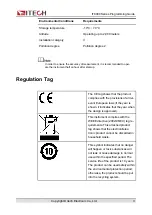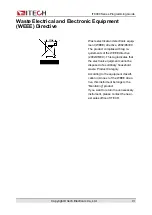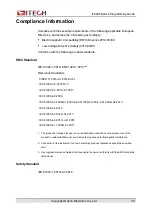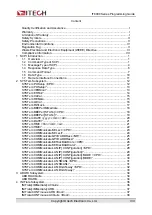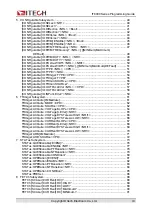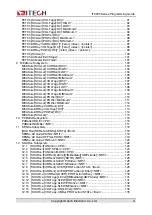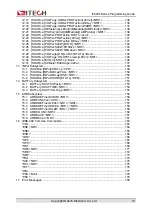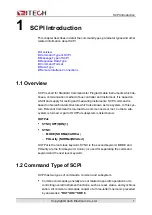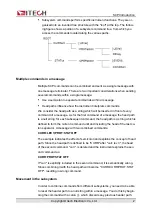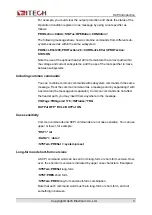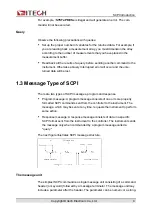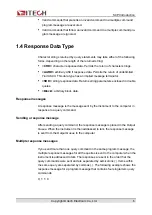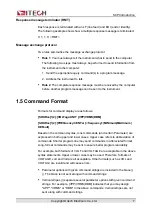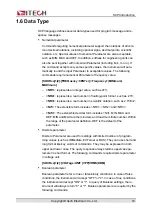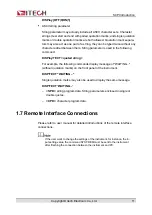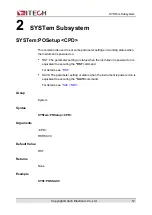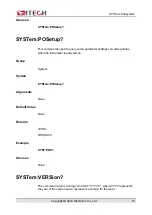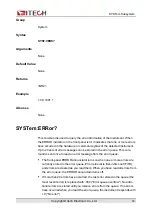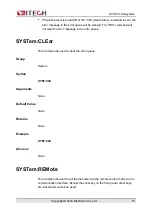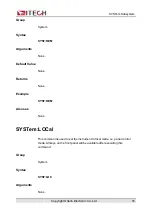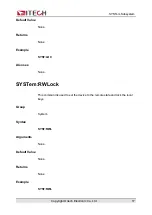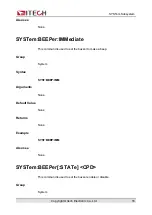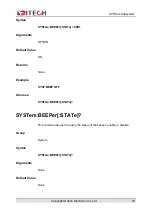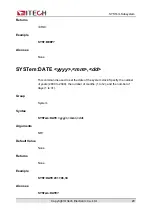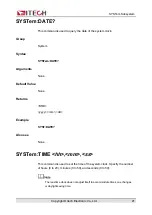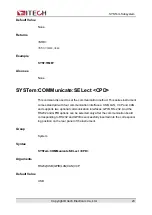
•
Angle brackets (< >) in the second example indicates that a value must be
assigned to the parameter in the brace. For example, the parameter in the
angle bracket is <frequency> in the above syntax statements. Angle brack-
ets are not sent along with command strings. You must assign a value (such
as "FREQ:CENT 1000") to the parameter, unless you select other options
displayed in the syntax (such as "FREQ:CENT MIN").
•
Some syntax elements (such as nodes and Parameter) are included in
square brackets ([ ]). It indicates that these elements can be selected and
omitted. Angle brackets are not sent along with command strings. If no value
is assigned to the optional Parameter, the instrument will select a default val-
ue. In the above examples, "SOURce[1|2]" indicates that you may refer to
source channel 1 by "SOURce" or "SOURce1" or "SOUR1" or "SOUR". In
addition, since the whole SOURce node is optional (in the square bracket),
you can refer to the channel 1 by omitting the whole SOURce node. It is be-
cause the channel 1 is the default channel for SOURce language node. On
the other hand, if you want to refer to channel 2, "SOURce2" or "SOUR2"
must be used in the program line.
Colon (:)
It is used to separate key words of a command with the key words in next level.
As shown below:
APPL:SIN 455E3,1.15,0.0
In this example, APPLy command assigns a sine wave with frequency of 455
KHz, amplitude of 1.15 V and DC offset of 0.0 V.
Semicolon (;)
It is used to separate several commands in the same subsystem and can also
minimize typing. For example, to send the following command string:
TRIG:SOUR EXT; COUNT 10
has the same effect as sending the following two commands:
TRIG:SOUR EXT
TRIG:COUNT 10
Question mark (?)
You can insert question marks into a command to query current values of most
Parameter. For example, the following commands will trigger to set the count as
10:
TRIG:COUN 10
Copyright © Itech Electronic Co., Ltd.
8

